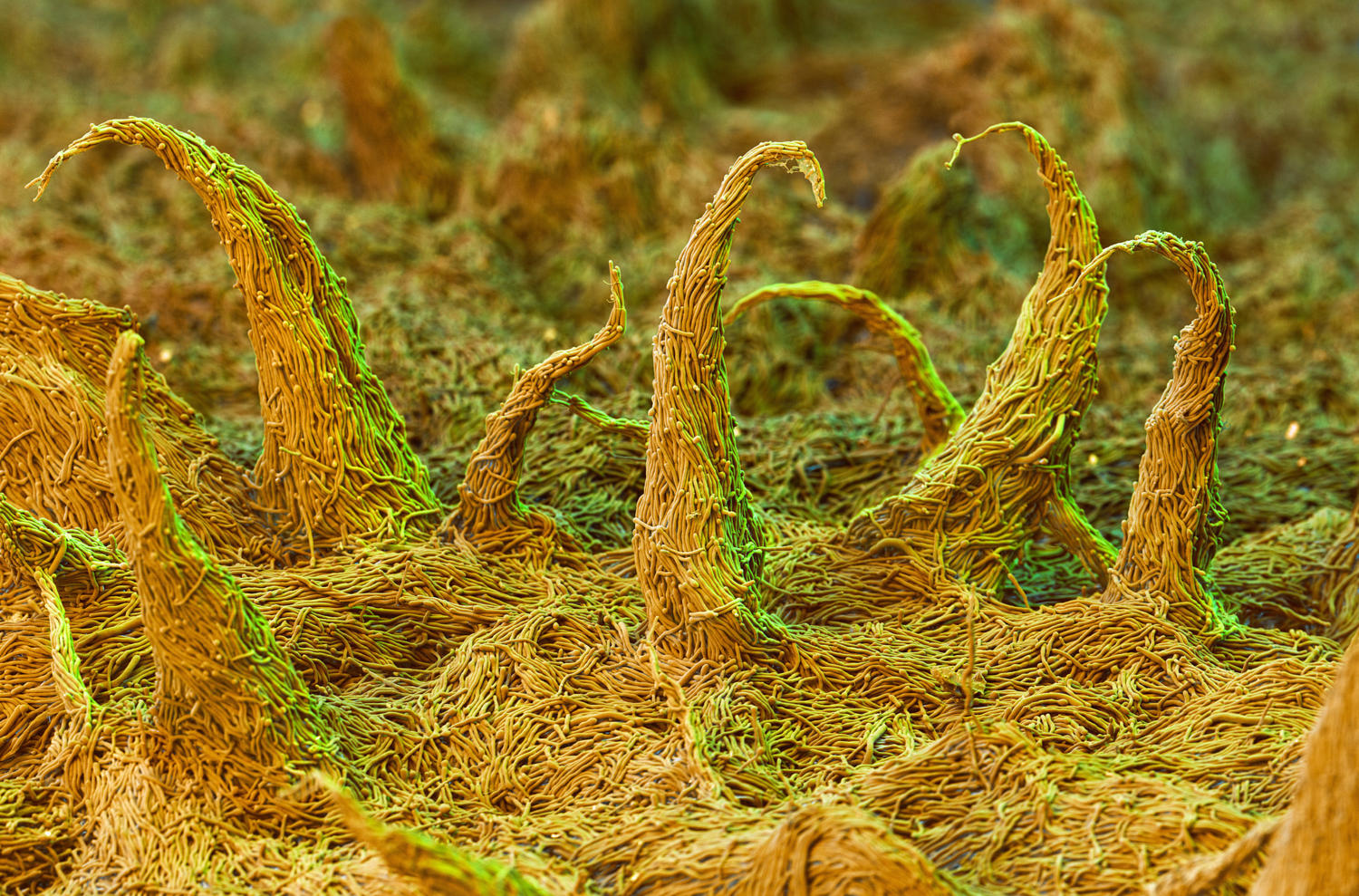BASF: Biotechnological Production of Riboflavin (Vitamin B2)

Vitamin B2 is an essential micronutrient for humans and animals. The global world market for vitamin B2 more than doubled from 4000 tonnes in 2002 to 9000 tonnes in 2015. Vitamin B2 is an example of a complete shift from chemical synthesis to exclusive biotechnological production in less than 15 years.
For almost five decades, commercial vitamin B2 was produced almost exclusively by chemical synthesis. The main disadvantages were the low yield of about 60%, as well as the use of toxic agents such as amalgam and xylidine and thereby the production of waste products that required environmental control and special effluent treatment. For these reasons, first attempts to obtain vitamin B2 by fermentation had already started in 1940. By using a fungus-based system, BASF achieved the industrial-scale fermentation of vitamin B2 in 1990, starting from vegetable oil as the main carbon source.
A comprehensive eco-efficiency analysis conducted by BASF in 2003 determined that the fermentative process is more sustainable than the chemical route. Besides the environmental advantage of a 30% decrease in CO2-emissions and a reduction of hazardous substances, a significant economic advantage was shown, with a 40% reduction in production costs.
Today, 100% of vitamin B2 on the global market is produced by fermentation using biotechnology
Company in brief
At BASF, we create chemistry for a sustainable future. We combine economic success with environmental protection and social responsibility. More than 117,000 employees in the BASF Group work on contributing to the success of our customers in nearly all sectors and almost every country in the world. Our portfolio is organized into six segments: Chemicals, Materials, Industrial Solutions, Surface Technologies, Nutrition & Care and Agricultural Solutions. BASF generated sales of €59 billion in 2019. BASF shares are traded on the stock exchange in Frankfurt (BAS) and as American Depositary Receipts (BASFY) in the U.S.
Background
Biotechnology has the potential to increase efficiency and save resources. Vitamin B2 can be chemically produced or biotechnologically by fermentation. The objective of this BASF eco-efficiency analysis, performed already in 2003, was to determine which process is the more sustainable one.
Initiative
The eco-efficiency analysis was developed in 1996 as a tool for optimizing BASF product lines. The goal of the analysis is to quantify the sustainability of products and processes. It looks at the complete life cycle of a product “from the cradle to the grave”. Eco-efficiency analysis are also performed in order to help conserve resources. For this purpose, the economic and ecological advantages and disadvantages of different product and process solutions fulfilling the same function for customers are compared with each other. In this case study, performed in 2003, the defined customer-related benefit is the production of 10 kg of Vitamin B2 as a feed supplement.
The eco-efficiency analysis of vitamin B2 revealed that biotechnology is the most eco-efficient process for the production of vitamin B2. BASF stopped its chemical synthesis and is producing vitamin B2 by fermentation since 30 years. Biotechnologically produced vitamin B2 is now the process of choice globally.
Sustainability criteria
Sustainability criteria
In the eco-efficiency analysis, the environmental impact is investigated according to six main categories (raw material consumption, surface use, energy consumption, emissions to air, water and soil, toxicity potential, risk potential). The different parameters are determined quantitatively and then weighted by their relevance and social factor. The biotechnological process of vitamin B2 has advantages over the chemical method in five of the six categories. The reduced air emissions and low consumption of ressources are particular significant. The measures result in a 25% decrease in energy consumption and a decrease of as much as 33% in the Global Warming Potential (GWP). Even more striking is the toxicity potential: as a result of the natural raw materials used, this figure is almost zero. The only category in which the biotechnological process performs less well is the surface requirement. Because of the need for a significant area under cultivation, the demand for soil is greater than for a small wheat cultivation plot and the chemical plant.
Overall the ecological fingerprint clearly shows the environmental advantages of biotechnological production.
Business case
In the eco-analysis, the cost-performance of the two production methods was compared. By eliminating the need for intermediated steps, noticeable economic advantages can be achieved by the biotechnological production. Over the whole production process, costs can be reduced by more than 40%.
Next Steps
Biotechnology is a powerful and useful process alternative today and in the future. Lots of desired products can be made by fermentation. Prominent examples are ethanol as biofuel, antibiotics as medicine, and amino acids as food and feed ingredient .
BASF is using biotechnological production processes not only for vitamin B2, but also for HMO, enzymes and flavors as well as for plant protection products and a broad range of chemical compounds like organic acids. Biotechnology is the process of choice for enzymes and complex compounds. Novel biosynthetic routes can now be achieved expanding the range of chemicals accessible by biotechnology, while new fermentation technologies targeting novel active ingredients, commodity chemicals, and CO2-fixation methods are on the horizon.
